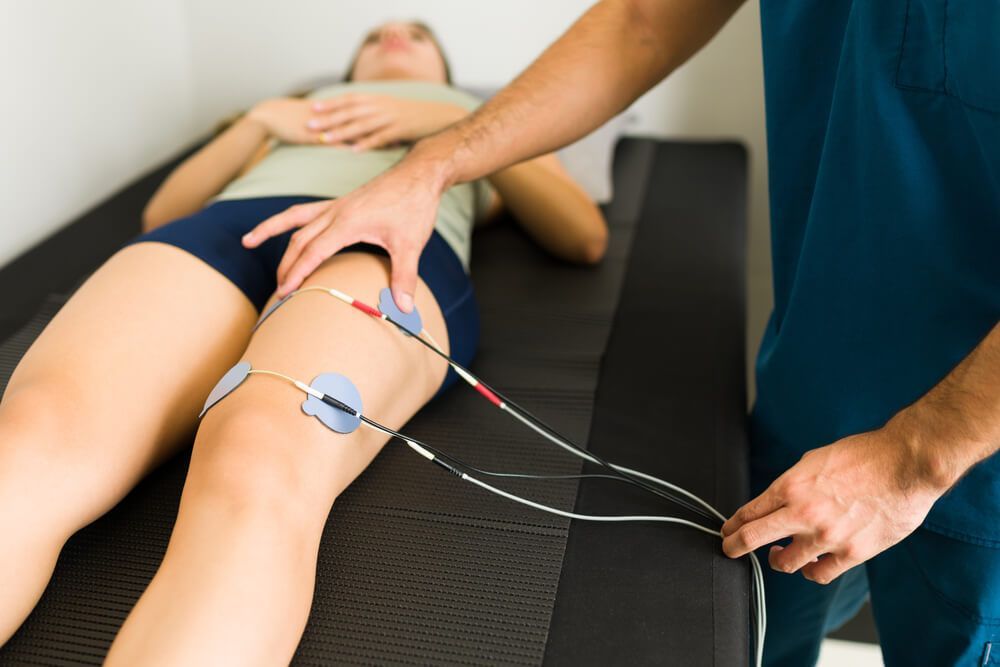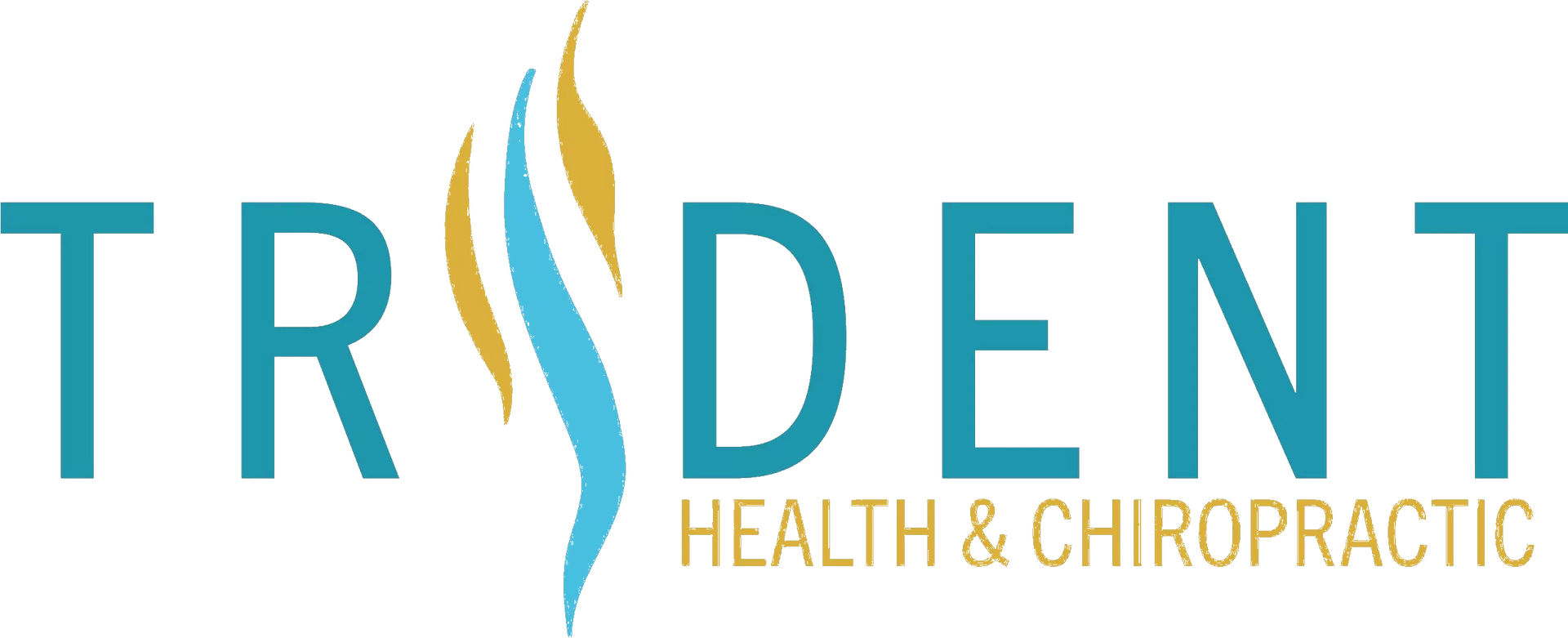Electrotherapy in Spartanburg, South Carolina, often referred to as electrical stimulation therapy, is increasingly recognized as a valuable method for managing pain and facilitating recovery. This therapeutic approach has a long history of addressing various ailments, including muscle spasms, persistent pain, and physical injuries. Innovations in electrotherapy have also expanded its application to conditions like carpal tunnel syndrome and tennis elbow.
At Trident Health & Chiropractic, we offer complete electrotherapy services. The therapy operates by emitting electrical currents, which significantly aid in decreasing swelling and encouraging the healing of injured tissues. It has also been observed that electrotherapy contributes to diminishing muscle strain and enhancing blood flow. We encourage you to meet with our team to learn how this form of therapy provides comprehensive solutions for a diverse range of health issues.

What is Electrotherapy in Spartanburg?
Electrotherapy is a medical treatment that employs controlled electrical energy, therapeutic ultrasound, to aid in pain management, muscle stimulation, and overall healing processes. This method involves the application of electrical currents through electrodes placed on the skin, targeting specific areas of the body. These currents are carefully modulated to ensure they are safe and effective.
The therapy is known for its versatility in treating various conditions, including joint pain, muscle atrophy, and neurological disorders. It works by stimulating nerve endings to reduce pain perception, promoting muscle contraction in weakened muscles, and enhancing tissue repair by improving blood circulation. This non-invasive technique is widely used in physical therapy, rehabilitation, and sports medicine, offering a drug-free alternative for pain relief and muscle recovery.
Electrotherapy is used to treat the following:
- Muscle spasms and tension
- Chronic pain conditions, including arthritis and fibromyalgia
- Joint pain and inflammation
- Plantar fasciitis
- Nerve-related pain disorders, such as sciatica
- Muscle atrophy and weakness
- Sports injuries, including sprains and strains
- Post-surgical rehabilitation
- Carpal tunnel syndrome and other repetitive strain injuries
- Tennis elbow and other tendonitis conditions
- Neurological disorders affecting muscle function
- Improving blood circulation in affected areas
How is Electrotherapy in Spartanburg, SC Carried Out?
Electrotherapy devices not only alleviate pain but also help in maintaining and increasing range of motion by aiding in tissue repair.
At Trident Health & Chiropractic, electrotherapy is carried out through a series of steps that ensure its effectiveness and safety:
- Assessment and Planning: Initially, a healthcare professional, often a physical therapist or a doctor, assesses the patient's condition. They determine the suitability of electrotherapy for the specific ailment, considering factors like the patient's medical history and specific pain or injury location.
- Preparation: The area of the body where electrotherapy will be applied is cleaned to ensure good electrode pads contact. In some cases, a conductive gel is applied to the skin to improve the transmission of electrical impulses.
- Electrode Placement: Electrodes, typically in the form of adhesive pads, are strategically placed on the skin near the affected area. The placement depends on the target tissues and the type of condition being treated.
- Setting the Parameters: The electrotherapy device is adjusted to the appropriate settings, including intensity, frequency, and duration of the electrical impulses. These parameters are tailored to the individual's condition and tolerance.
- Application of Therapy: Once everything is set, the device is turned on, and electrical currents are passed through the electrodes into the body. The patient may feel a tingling sensation or muscle twitching, which should not be painful.
- Monitoring: Throughout the session, the therapist monitors the patient's response to ensure comfort and effectiveness. Adjustments to the settings can be made as needed.
- Duration and Frequency: A typical electrotherapy session may last from a few minutes to up to 20 minutes, depending on the condition being treated. The total number of sessions required varies, with some conditions needing multiple sessions over several weeks.
- Post-Therapy Care: After the session, the electrodes are removed, and post-treatment care instructions are provided, which may include exercises, rest, or other complementary therapies.
- Evaluation of Effectiveness: The effectiveness of the therapy is evaluated over time, with adjustments made to the treatment plan as necessary based on the patient's response.
Electrotherapy in Spartanburg is a non-invasive, generally safe procedure when carried out by a trained professional at Trident Health & Chiropractic, and it's an important tool in pain management and rehabilitation.
Types of Electrotherapy
Electrotherapy encompasses a variety of techniques, each tailored to treat different conditions and achieve specific therapeutic goals.
Here are some of the main types:
- Transcutaneous Electrical Nerve Stimulation (TENS): TENS is widely used for pain relief, especially chronic pain and neuropathic pain. It sends low-voltage electrical impulses through the skin to block pain signals from reaching the brain.
- Electrical Muscle Stimulation (EMS): EMS, also known as neuromuscular electrical stimulation (NMES), is used to stimulate muscle contraction. It helps prevent muscle atrophy, strengthen muscles, and rehabilitate after injury or surgery.
- Interferential Current Therapy (IFC): This therapy uses a high-frequency electrical signal to penetrate deep into the tissues. It's effective for pain relief, reducing inflammation, and accelerating the healing process.
- Galvanic Stimulation (GS): GS provides direct current to the body, which is beneficial for treating acute injuries associated with major tissue trauma, muscle spasms, and edema.
- Russian Stimulation: This form of electrotherapy is used primarily for muscle strengthening, employing a higher frequency current that can penetrate deeper muscle layers.
- Microcurrent Electrical Neuromuscular Stimulation (MENS): MENS applies extremely low-level electrical currents to stimulate natural healing processes, often used for pain relief and healing of soft tissues
- Percutaneous Electrical Nerve Stimulation (PENS): PENS is similar to TENS but uses needles to deliver the electrical current directly to deeper tissues.
- Functional Electrical Stimulation (FES): FES is used to enhance functional activities by inducing muscle contraction in paralyzed muscles, often employed in stroke rehabilitation or spinal cord injury.
- High Voltage Pulsed Galvanic Stimulation (HVPGS): HVPGS uses high-voltage, short-duration pulses for deep tissue penetration, effective in wound healing and reducing edema.
Each type of electrotherapy has its specific indications and protocols, and the choice of which to use depends on the individual patient's condition and therapeutic goals.




